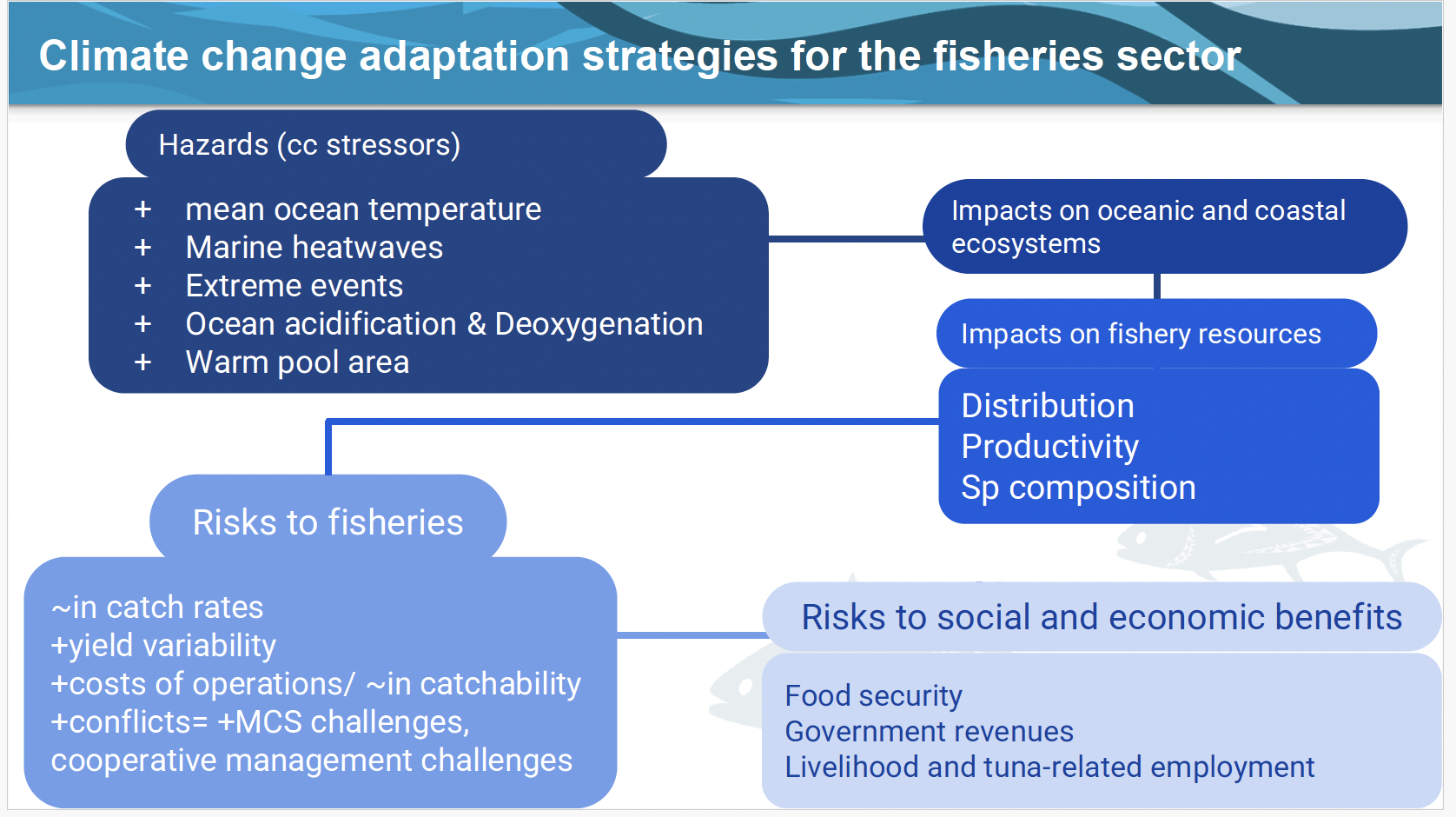Continuing with my Climate Change in Fisheries Series (CCFS), here is my 7th on Incorporating climate scenarios in fisheries research.
Marina Abas from the FFA delivered this presentation on climate-informed fisheries management strategies.
Like me, she started her career in Argentina and now works in the Pacific. She has also become a bit like a “niece” to me. She is part of a diverse group of people in the region that I try to support professionally and as humans for various reasons, and I think they are good sorts.
Her presentation aimed to delve into managing climate-related risks to fisheries by developing adaptation strategies that will help build resilience in the sector.
The IPCC first introduced the climate change risk assessment framework, which evaluates risk by considering hazards, exposure, and vulnerability. Hazards encompass climate-related impacts like sea level rise, ocean acidification and storm intensification. Exposure involves the presence of people, livelihoods, species, ecosystems and assets in areas susceptible to adverse effects. Vulnerability, comprising sensitivity and adaptive capacity and gauges the predisposition of communities to hazards. Sensitivity in fisheries is assessed based on dependence, while adaptive capacity assesses the ability to cope and implement preventive measures against climate change impacts. This framework aids in understanding the aspects that contribute most to risks and working on strategies to manage those climate change-related risks in various contexts, including fisheries.
An introduction to climate-resilient fisheries management approaches already in use discussed how management strategies can be used as climate change adaptation strategies. Four foundations for climate-resilient fisheries were introduced: effective fisheries management systems, strong participatory processes, precautionary systems that deal with uncertainty and risks, and adaptive fishery management systems.
Discussion
Each sector can start by doing its part to cooperate and work together as partners when developing adaptive strategies, as social communities and ecosystems are linked and will impact each other in a changing climate. Many of the approaches described are already in place, but they need to be considered through a climate lens. We can manage for the change in the fisheries, but how we address the problems in the future and when we begin talking about loss and damage and rights to resources that have moved spatially require discussion.
To address these new issues, we will need to start thinking outside the box and develop new approaches. We will need to look at all the aspects, identify weak points, and try to respond to them. Managers, scientists, and communities working together will need to address this. We also need to evaluate what happens within the intermediate periods, which has not been tested as we tend to focus on the extreme scenarios only.
When stakeholders consider the overall risk to the stock, the community will need to assess the hazards within a risk assessment framework e.g. risks to vessel (e.g. vessels fishing in increasingly stormy seas) vs a stock moving outside of the area so that we can rank risks/hazards and model these aspects. In addition, these individual risks/hazards will need to be weighted within the framework to assess the overall risk.
